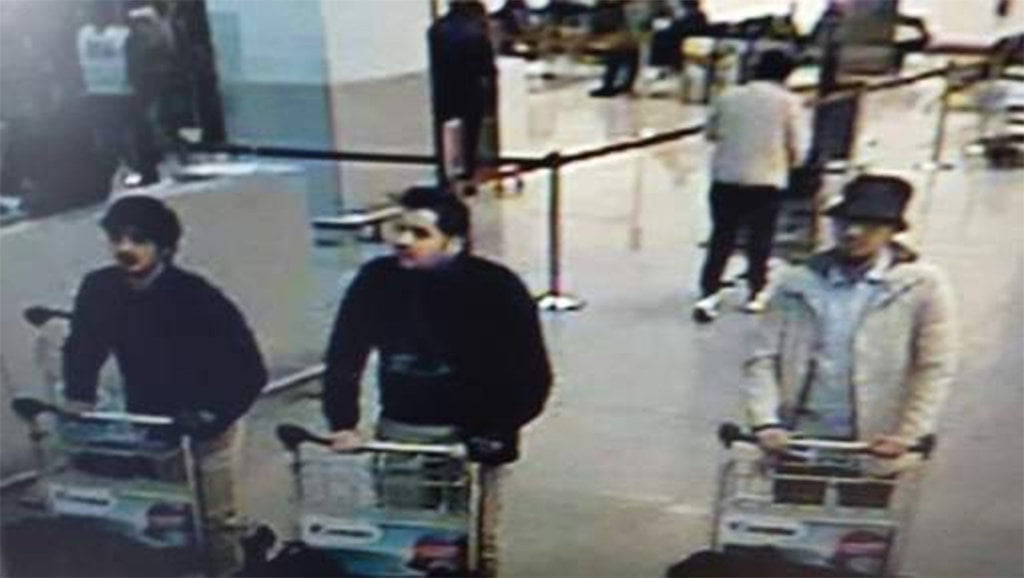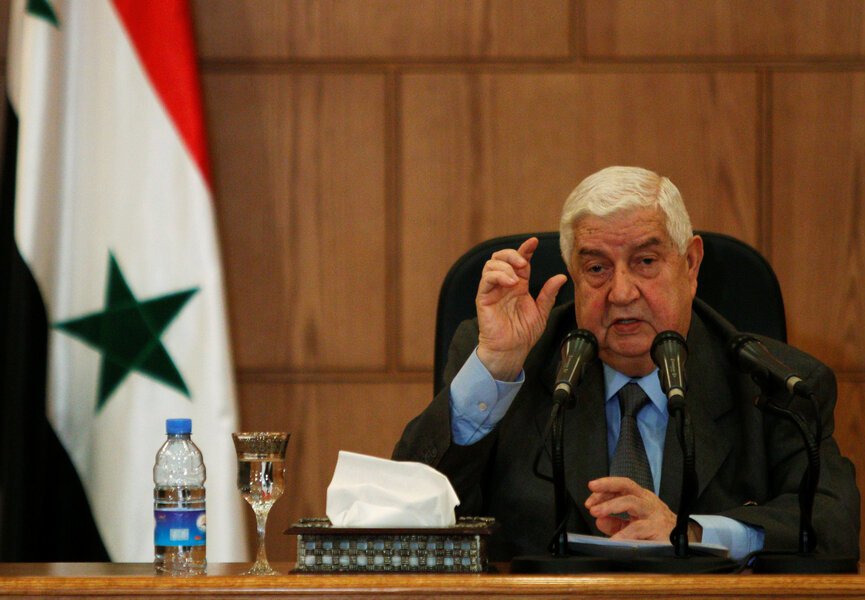
The grainy image captured on a surveillance camera at Brussels Airport shows three men pushing luggage carts into the check-in terminal. Their expressions seem casual, even relaxed.
We have come to expect this demeanor from the Islamic State fighters dispatched from Syria to carry out mass murder in Europe. “Calm” and “determined” were among the most frequently used descriptions by witnesses who saw the attackers during the November attacks in Paris. “Ready to die,” was another.
Belgian officials have identified the three men in the photo as central suspects in the bombings at the airport: Two of them, in black and wearing single black gloves on their left hands, were thought to have been killed.
The third, wearing white, is still being sought in the attack, which along with another bombing at a train station was quickly claimed by the Islamic State militant group.
On Wednesday, the authorities identified two brothers as bombers in the attacks — Khalid el-Bakraoui, 27, and Ibrahim el-Bakraoui, 29; they said Ibrahim was responsible for one of the airport bombs, but Khalid’s role remained unclear.
The image offers potential clues to the techniques and mindset of the suspects, though it cannot alone provide answers.
ISIS’s Signature Explosive in Europe
Triacetone triperoxide, which was used in the Paris attacks in November, has become ISIS’s explosive of choice in Europe. Specialists in bomb detection explain why.
By NEIL COLLIER, MARGARET CHEATHAM WILLIAMS and TAIGE JENSEN on Publish DateMarch 20, 2016. Photo by Marius Becker/European Pressphoto Agency.
First, the gloves on two of the suspects prompted speculation that they were hiding detonation devices. In the Paris attacks on Nov. 13, hostages held by the Islamic State attackers inside the Bataclan concert hall reported seeing the gunmen pacing the hall with detonators in their hands. And next to the bodies of those who set off their explosive vests, officials found electrical wire, nine-volt batteries and melted plastic believed to have been part of the detonation mechanisms.
The bombs in the November attacks were made of triacetone triperoxide, or TATP, an explosive used in seven places across Paris, and traces of which were found in what were suspected to be Islamic State safe houses in Belgium. The explosives used in Tuesday’s attack have not yet been identified, but given that TATP has become the Islamic State’s signature explosive for attacks in Europe, experts are expecting the bombs to also have been made from a TATP recipe.
Among the ways a TATP bomb can be ignited is through an electrical charge, using a simple battery and wiring that can be held in the palm of one’s hand, explained Jimmie C. Oxley, a professor of chemistry at the University of Rhode Island, considered a leading expert on TATP. Shown the image of the three suspects, Professor Oxley noted that it would be odd for the bombers to wear a single glove, because it might draw attention.
What Happened at Each Location in the Brussels Attacks
Maps and diagrams show the extent of the damage at the airport and subway station.

Second, based on the extensive damage inside the airport, including tiles or paneling in the ceiling that had been blown out, Professor Oxley surmised that the bombers most likely had more than just suicide belts. A belt like those used in Paris can carry around one pound of TATP.
She estimated that the damage in the Brussels airport, based on the available images, was probably caused by a bomb containing 30 to 100 pounds of TATP. The video of the three suspects shows them pushing suitcases, which could have carried the bomb, but then the detonation mechanism most likely would not have been carried by hand, she explained.
One of the telltale signs is a crater. If the bombs were in the baggage, and the suitcases were around six inches off the ground on the cart, they would probably have burrowed into the floor of the terminal, she said.

Graphic: Brussels Is Latest Target in Islamic State’s Assault on West
In an interview with Agence France-Presse, the mayor of Zaventem, the suburb where the airport is, said that there were bombs in three of the bags pictured on the men’s luggage carts. He said that two had exploded.
A third hint to the Islamic State’s protocols for terrorist attacks may be evident in the faces of the suspects.
Their beards seem to be trimmed close to their faces, in contradiction of the strict Islamic codes practiced by the Islamic State in the territories they control in Syria, Iraq and Libya, where men are not allowed to trim their facial hair. But the Islamic State has instructed its operatives to shave their beards while in Western countries so they blend in better, according to court documents.
Some public officials have pointed to mosque attendance or conservative Islamic styling like hijabs for women or long beards for men as signs of radicalization. But more often, the opposite is the case: None of the known attackers in Paris were regular attendees at mosques.
And in Paris, closed-circuit TV video of the bombers showed men much like the ones in the check-in terminal at the Brussels terminal. Beyond being calm, they also had closely trimmed beards, and their appearance was designed to mimic that of typical young European men.
The gunmen at the Bataclan were described as wearing sports clothes. At the Stade de France, the leg of one bomber was still inside a tracksuit bearing the logo of a German soccer club.






